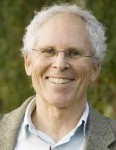Transpacific Drought and Plastics

When I pick up trash at our local Table Rock Beach, most of what I gather consists of plastics: empty single-use water bottles, snack packaging, and some bags. Since we live along a fairly developed side of the world’s largest ocean, I have come to expect finding discarded plastic refuse on our beaches. However, when my wife and I traveled to one of the most remote and exotic destinations in the entire Pacific world—wild and scenically spectacular New Guinea—recently, we were shocked to see tiny waterfront villages nearly blanketed with plastic debris, mainly emptied bottles. Moreover, villagers there, living amid active volcanoes and lush vegetation in an equatorial zone, are suffering from severe drought just as we Californians are.
Tucked away in the farthest reaches of the Southwest Pacific, New Guinea (a large island, part of which belongs to Indonesia, and part of which is the independent nation of Papua New Guinea) offers a case study in the globalization of pollution and climate change. My wife and I travelled with National Geographic/Lindblad Expeditions aboard Orion, where scientists, divers, and anthropologists provided us with daily lectures on the marine ecology of the region and the cultures of the indigenous peoples we encountered. We were also given talks on the impacts of climate change on ocean environments.
Even in far off, undeveloped New Guinea, drought and plastics were very much in evidence. Trashcans were a rarity and recycling receptacles were virtually non-existent. This was perhaps a consequence of a pre-Stone Age people struggling to contend with the introduced products of industrialized societies. In the villages of Syru, Agats, and Yahunyufri our expedition group interacted with friendly Asmat people, who reportedly up until 2000 were naked cannibals and headhunters still living in what some call the Wood Age. The word “Asmat” in fact means “we the tree people.” In 1961 Michael Rockefeller, son of then-Governor Nelson Rockefeller, disappeared permanently while collecting museum-quality primitive Asmat wood carvings. A number of sources believe that the young art collector had wandered into the wrong place at the wrong time. His disappearance had been preceded by Dutch officials killing four Asmat war leaders in an attempt to abolish tribal headhunting and cannibalism, we were told by Lawrence Blair, shipboard author of “Ring of Fire: An Indonesian Odyssey.” Native culture required the avenging of such deaths and Blair and other authorities believe young Rockefeller died at the hands of avenging tribesmen. An Asmat village museum that we visited contained an exhibit of human skulls, likely avenging trophies, which were displayed near the stuffed carcass of a ferocious-looking, 18-foot river crocodile killed by locals.
After leaving the Asmat region, our expedition went to the nearby Trobriand Islands, belonging to Papua New Guinea. There our leaders furnished the drought and famine-stricken villagers with potable water, huge sacks of rice, and medical supplies.
Pollution from plastics, oil drilling, and mining, plus overfishing, are taking a toll on New Guinea’s coastal waters. Still, the snorkeling in clear, warm ocean water was exceptionally good. The vibrantly colored reefs (especially at Alyui Bay, Waigeo Island, and Raja Ampat) off the Bird’s Head Peninsula abounded with tropical fish, most of which were small, however. Seldom did we see sharks. Their presence, we were told, is a sign of a healthy reef.
Returning to Brisbane, Australia, after spending three weeks in the distant waters and jungles of New Guinea, felt like landing on a different planet. It took us more than a week to recover from our recent 13-hour flight to California. New Guinea is now more than a spot on the map to us. It is one of the most other-worldly archipelagos in the vast Pacific Basin. We learned that Californians are connected to New Guineans by severe drought and plastic refuse. For good or ill, it seems our futures will be shared ones.
Tom Osborne is a specialist in California and Pacific history. He is writing an account, under contract with the University of California Press, of Peter Douglas’s executive directorship of the California Coastal Commission.




